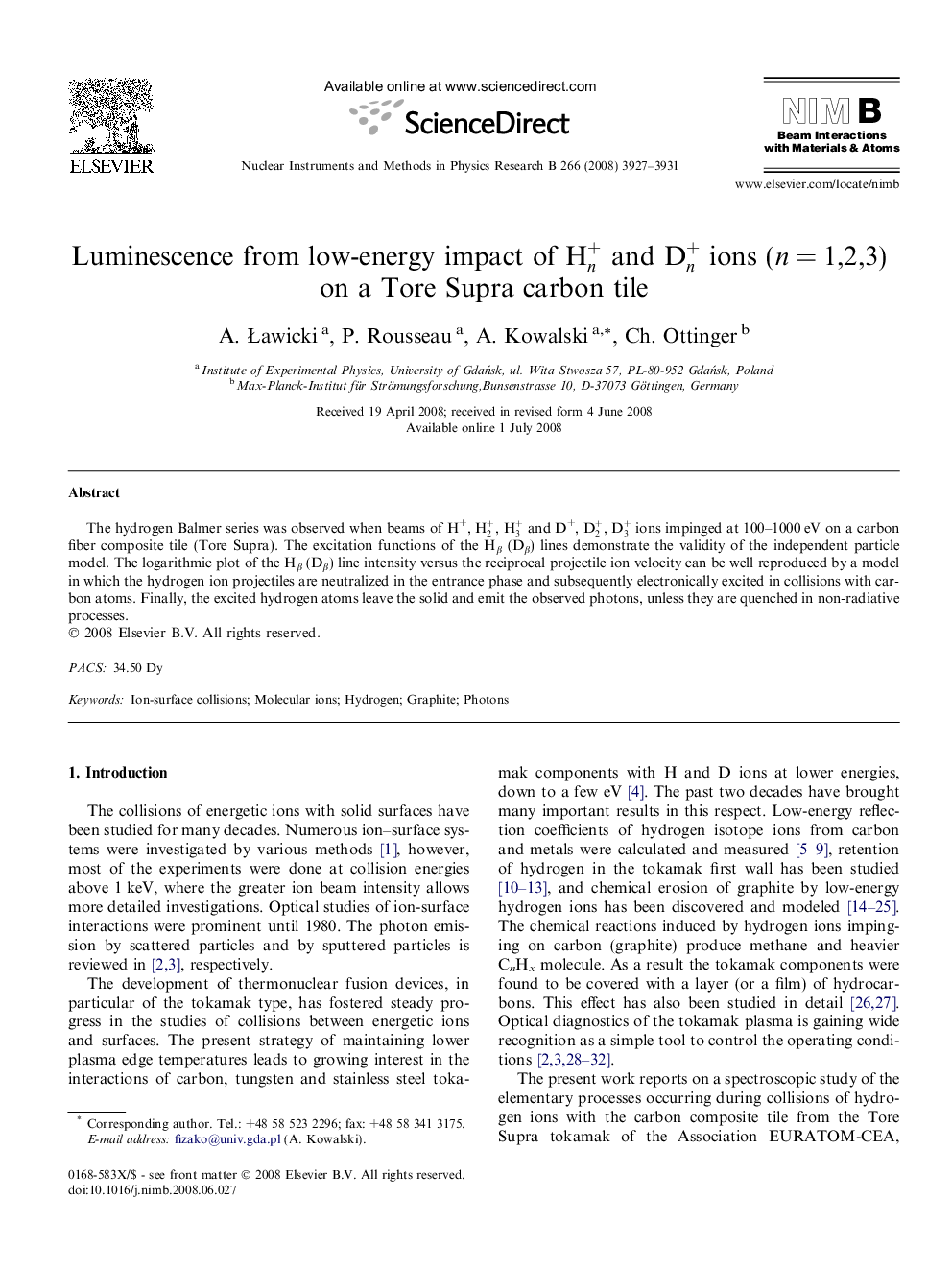| Article ID | Journal | Published Year | Pages | File Type |
|---|---|---|---|---|
| 1684825 | Nuclear Instruments and Methods in Physics Research Section B: Beam Interactions with Materials and Atoms | 2008 | 5 Pages |
Abstract
The hydrogen Balmer series was observed when beams of H+, H2+, H3+ and D+, D2+, D3+ ions impinged at 100–1000 eV on a carbon fiber composite tile (Tore Supra). The excitation functions of the Hβ (Dβ) lines demonstrate the validity of the independent particle model. The logarithmic plot of the Hβ (Dβ) line intensity versus the reciprocal projectile ion velocity can be well reproduced by a model in which the hydrogen ion projectiles are neutralized in the entrance phase and subsequently electronically excited in collisions with carbon atoms. Finally, the excited hydrogen atoms leave the solid and emit the observed photons, unless they are quenched in non-radiative processes.
Related Topics
Physical Sciences and Engineering
Materials Science
Surfaces, Coatings and Films
Authors
A. Ławicki, P. Rousseau, A. Kowalski, Ch. Ottinger,
